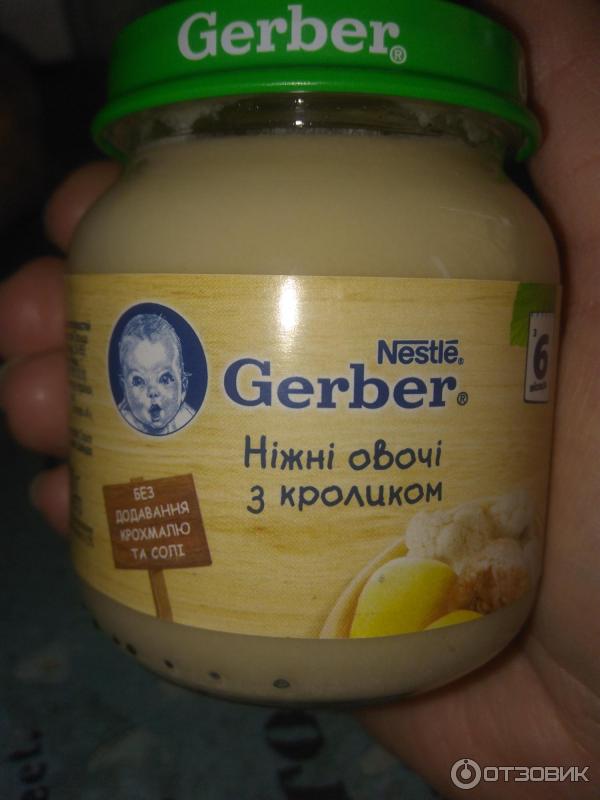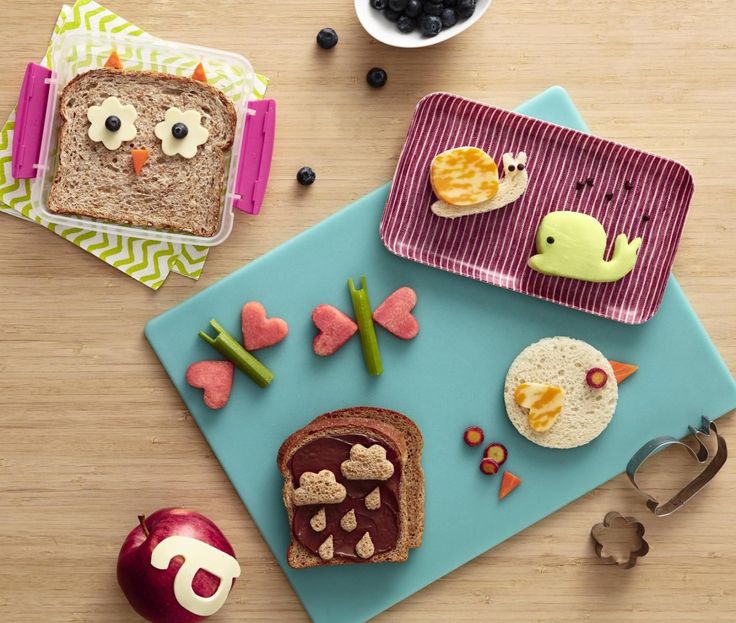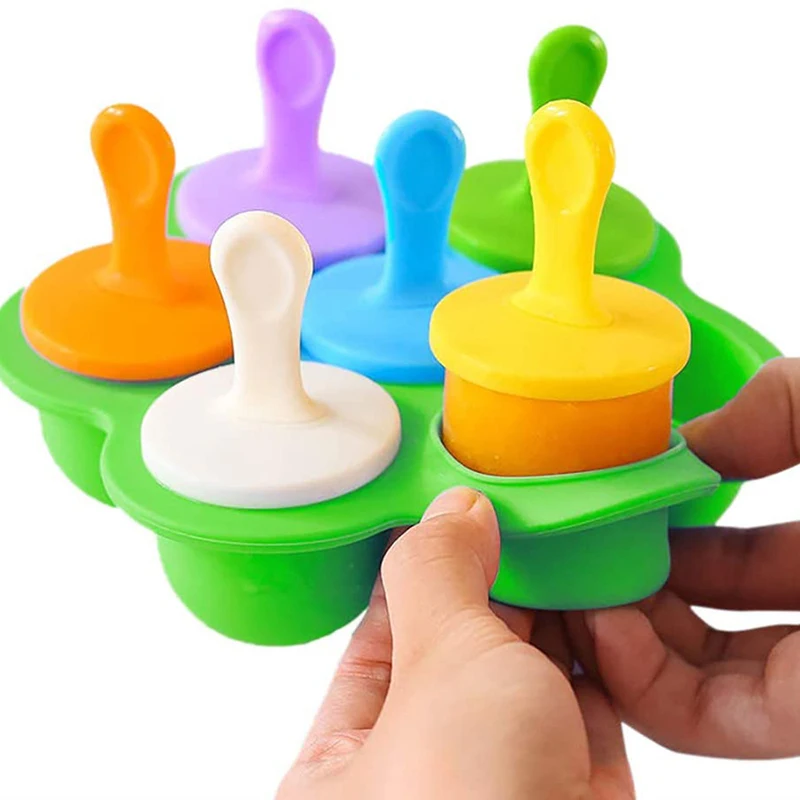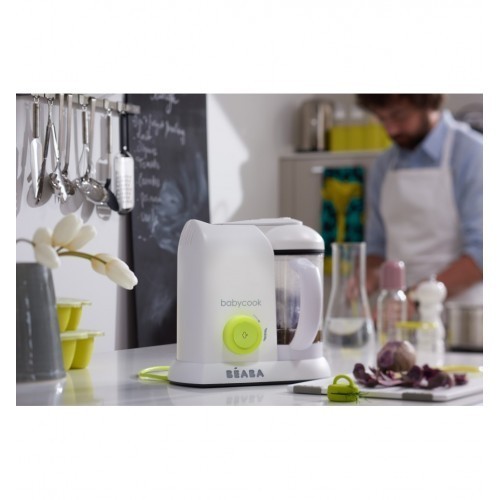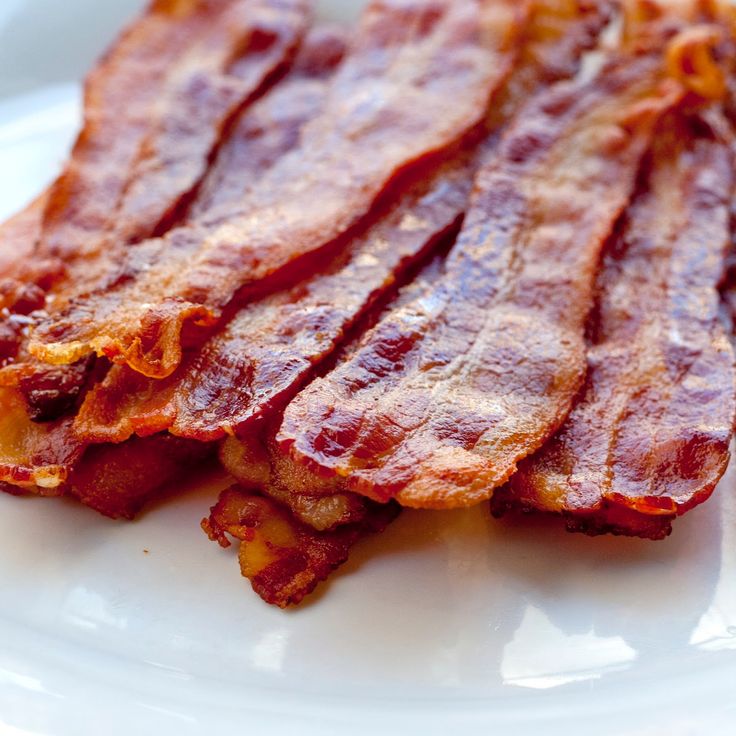Feeding baby cereal for the 1st time
How to Get Started – The Baby's Brew
I will always remember feeding each of my babies their first foods. After months of only breastfeeding and bottles, my husband and I couldn’t wait to introduce the next milestone to each of our babies. But with the first baby at least, there was also apprehension. Our pediatrician had recommended we start with a single-grain baby cereal such as rice cereal, but I didn’t know which one to get and I wanted to make sure I fed my baby the right way!
So to get you started off on the right food with baby feeding 101, I’ve put together this guide to giving your baby cereal for the first time. And it will only get more exciting as you introduce other foods to your little one.
Choosing a First Baby CerealBefore you actually feed your baby, you have to choose what you want to give them from the array of cereals and other options available.
Most parents reach for the rice cereal to give their baby as their first food. I know I did as a new mom! It’s an easy choice and one that doctors suggest due to its benefits. It's easy to such as its digest, won’t trigger an allergic reaction and is tolerated well by babies who’ve only been fed breastmilk or formula. It’s also iron-fortified, which babies need as their iron stores start to deplete around 6 months of age.
Though rice cereal has traditionally been suggested as the best first food for your baby, even many doctors may still give this recommendation, it has gotten a bit of a bad rap in recent years due to the arsenic that’s found in rice - causing parents to look at other options. (This article from Healthy Children explains how you can ensure rice cereal can be used in a healthy diet for your baby.)
If you do choose rice cereal, you’ll want to start introducing other solids to your baby shortly so that’s not all that they are getting, as recommended by the FDA.
Fortunately, if you want to skip the rice cereal completely, you can! There is no need to feel like this is the only first food for your baby. Many experts share that any iron-fortified single-grain baby cereal is a great choice, such as baby oatmeal or barley. You can even start with other pureed foods which we discuss later on in this article.
When to Start Feeding Your Baby CerealSeveral years ago the recommendation was that parents could feed their babies at four months if they showed readiness signs. But medical advice evolves and this is a guideline that medical experts have changed to give babies the healthiest start possible.
It’s now suggested that it’s best to wait til closer to your baby’s ½ birthday to introduce solids, especially if he is breastfed. There’s really no reason to rush it!
But it’s not just age you want to pay attention to as we know that all babies develop at different rates.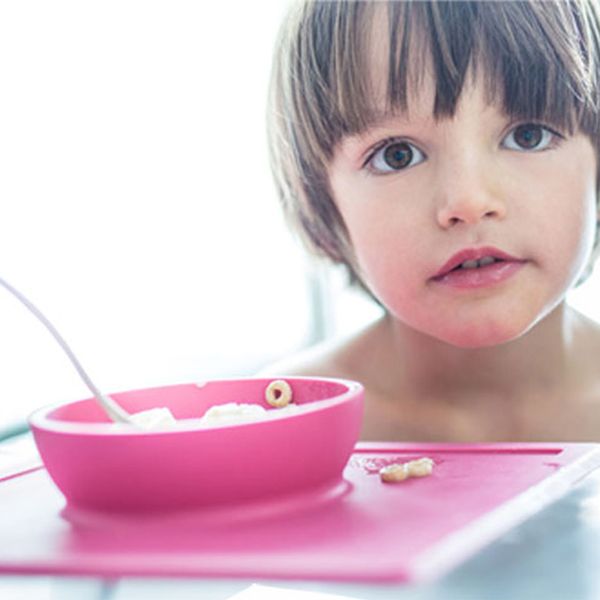
Here are signs to look for that will let you know your baby is ready for solid foods:
- able to sit up supported in a high chair
- has proper head control
- no more tongue thrust
- eager to take a spoon
- are interested in the food that you are eating
If your baby isn’t yet showing these signs, you’ll want to wait a bit longer before starting baby cereal or other solid foods. No need to worry - all babies are ready in their own time! Your baby will continue to get the nutrition they need from their breastmilk or formula so you don’t need to be concerned that they are missing out on important nutrients. If you do have concerns, it’s always best to talk to your pediatrician.
Can you give your baby cereal in a bottle?Even though your well-meaning grandma may suggest that you mix cereal into your baby’s bottle to help fill them up so they can sleep better, this practice is actually not safe according to the CDC. In fact, they share that it won’t help your baby sleep better anyway. This practice puts your baby at risk for choking or overfeeding and also may encourage parents to start solid foods long before they are ready.
In fact, they share that it won’t help your baby sleep better anyway. This practice puts your baby at risk for choking or overfeeding and also may encourage parents to start solid foods long before they are ready.
Instead, follow the guideline to not feed your baby solid foods until he or she is at least 5-6 months in age and watch for the other readiness signs mentioned above. At this point you can feed your baby with a spoon and introduce finger foods as they are ready.
RELATED: Starting Solid Foods With Your Baby
How to Introduce Cereal to Your BabyBreastmilk and formula will continue to be your baby’s primary source of nutrition until the age of one, but cereal is a great way to get them started with supplemental nutrition and transition them to solid foods. So how do you go about it?
Here are the steps to follow to give your baby her first single-grain cereal:
- Make sure they meet the recommended readiness signs. This will not only make for a safe feeding experience for your little guy or gal, but it will also be a lot more enjoyable for you.

- Plan to feed your little one after they’ve had a full feeding of breastmilk or formula. This way their tummy will mostly be full which means they’ll likely be happy to try a little cereal. (If you try to introduce solids to a hungry baby they will most likely be uncooperative!) Initially you’ll only feed your baby once per day, and it’s up to you when you want that time to be. We recommend choosing a time that your baby is usually in good spirits!
- Follow the directions on the label of your chosen baby cereal. You don’t need much to start! 1 tablespoon of cereal mixed with breastmilk or formula until it’s a runny consistency will be plenty for those first couple of feedings. If your baby is used to drinking warm milk or formula, you’ll want to use that same temperature of milk to mix with your baby’s food. (This is why we love the Baby’s Brew portable bottle warmer...you can choose your baby’s milk temperature with the push of a button!)
- Be sure your baby is sitting upright.
 Ideally this would be in a highchair, but they could also be sitting on your lap. You’ll want them to be wearing a bib as a lot your little one’s food won’t make it into their mouth initially.
Ideally this would be in a highchair, but they could also be sitting on your lap. You’ll want them to be wearing a bib as a lot your little one’s food won’t make it into their mouth initially. - Use an infant spoon to feed your baby. Do your best to get the spoon into their open mouth, but just know it’s going to be a bit messy at first as they get the hang of what’s going on. It won’t be long before they are opening wide at mealtime!
- Watch for cues from your baby that show that they are full (or are just are no longer interested). If your baby turns their head, is fussy or won’t open their mouth to eat, it’s time to be “all done!”
And that’s it! You can do another feeding the next day (or you can just do every other day) with the same type of cereal. Be sure to wait three - five days before introducing another food so you can keep an eye out for any allergic reactions. This is the recommendation given by the CDC.
After a couple weeks to a month of successfully feeding your baby once per day you can move to twice per day.
Some parents choose to start with a different food or may take baby cereal out of their little one’s diet altogether. Starting with other pureed foods instead is totally fine and may even work better for some babies. WebMD shares that both pureed vegetables or fruits are good starter foods and that there’s no rule saying that baby cereals must be first.
Some great first foods, if you want to skip the cereal route, include:
- Avocados
- Bananas
- Blended Red Meat (great source of iron)
- Squash
- Sweet Potatoes
- Pears
Just remember that these all need to be pureed and made into a runny consistency that’s easy for your baby to eat. Mixing with your baby’s warmed breastmilk or formula will help to bring this to a consistency that your baby can manage. You’ll also want to avoid giving your baby any of the top allergen foods such as the ones listed here unless you’ve been given different advice from your doctor. These are best introduced when your baby gets a little older.
These are best introduced when your baby gets a little older.
Still not sure which food to start with? It can be a bit overwhelming! This is a great conversation to have with your doctor before your baby turns 6 months and they can help guide you on what would be the best option. Whatever you choose, it is sure to be an exciting time for your family as your little guy or gal begins his journey of eating "real" food!
When, What, and How to Introduce Solid Foods | Nutrition
For more information about how to know if your baby is ready to starting eating foods, what first foods to offer, and what to expect, watch these videos from 1,000 Days.
The Dietary Guidelines for Americans and the American Academy of Pediatrics recommend children be introduced to foods other than breast milk or infant formula when they are about 6 months old. Introducing foods before 4 months old is not recommended. Every child is different. How do you know if your child is ready for foods other than breast milk or infant formula? You can look for these signs that your child is developmentally ready.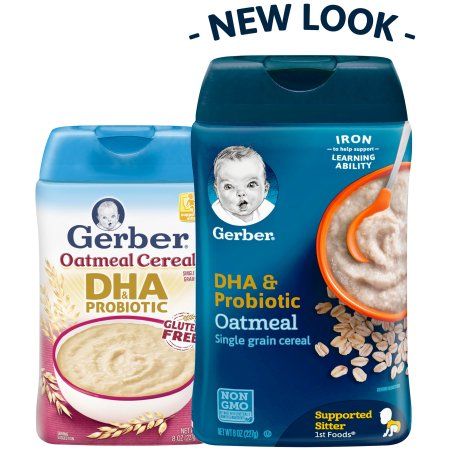
Your child:
- Sits up alone or with support.
- Is able to control head and neck.
- Opens the mouth when food is offered.
- Swallows food rather than pushes it back out onto the chin.
- Brings objects to the mouth.
- Tries to grasp small objects, such as toys or food.
- Transfers food from the front to the back of the tongue to swallow.
What Foods Should I Introduce to My Child First?
The American Academy of Pediatrics says that for most children, you do not need to give foods in a certain order. Your child can begin eating solid foods at about 6 months old. By the time he or she is 7 or 8 months old, your child can eat a variety of foods from different food groups. These foods include infant cereals, meat or other proteins, fruits, vegetables, grains, yogurts and cheeses, and more.
If your child is eating infant cereals, it is important to offer a variety of fortifiedalert icon infant cereals such as oat, barley, and multi-grain instead of only rice cereal.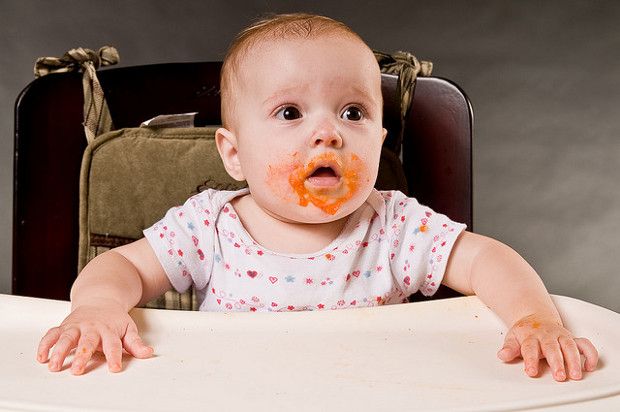 Only providing infant rice cereal is not recommended by the Food and Drug Administration because there is a risk for children to be exposed to arsenic. Visit the U.S. Food & Drug Administrationexternal icon to learn more.
Only providing infant rice cereal is not recommended by the Food and Drug Administration because there is a risk for children to be exposed to arsenic. Visit the U.S. Food & Drug Administrationexternal icon to learn more.
How Should I Introduce My Child to Foods?
Your child needs certain vitamins and minerals to grow healthy and strong.
Now that your child is starting to eat food, be sure to choose foods that give your child all the vitamins and minerals they need.
Click here to learn more about some of these vitamins & minerals.
Let your child try one single-ingredient food at a time at first. This helps you see if your child has any problems with that food, such as food allergies. Wait 3 to 5 days between each new food. Before you know it, your child will be on his or her way to eating and enjoying lots of new foods.
Introduce potentially allergenic foods when other foods are introduced.
Potentially allergenic foods include cow’s milk products, eggs, fish, shellfish, tree nuts, peanuts, wheat, soy, and sesame. Drinking cow’s milk or fortified soy beverages is not recommended until your child is older than 12 months, but other cow’s milk products, such as yogurt, can be introduced before 12 months. If your child has severe eczema and/or egg allergy, talk with your child’s doctor or nurse about when and how to safely introduce foods with peanuts.
Drinking cow’s milk or fortified soy beverages is not recommended until your child is older than 12 months, but other cow’s milk products, such as yogurt, can be introduced before 12 months. If your child has severe eczema and/or egg allergy, talk with your child’s doctor or nurse about when and how to safely introduce foods with peanuts.
How Should I Prepare Food for My Child to Eat?
At first, it’s easier for your child to eat foods that are mashed, pureed, or strained and very smooth in texture. It can take time for your child to adjust to new food textures. Your child might cough, gag, or spit up. As your baby’s oral skills develop, thicker and lumpier foods can be introduced.
Some foods are potential choking hazards, so it is important to feed your child foods that are the right texture for his or her development. To help prevent choking, prepare foods that can be easily dissolved with saliva and do not require chewing. Feed small portions and encourage your baby to eat slowly.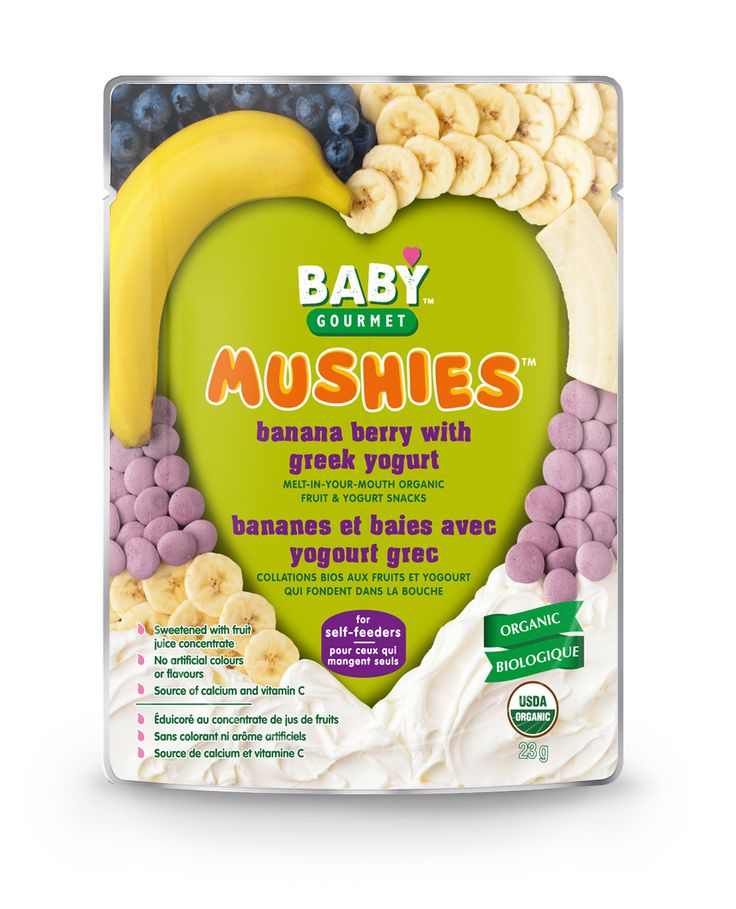 Always watch your child while he or she is eating.
Always watch your child while he or she is eating.
Here are some tips for preparing foods:
- Mix cereals and mashed cooked grains with breast milk, formula, or water to make it smooth and easy for your baby to swallow.
- Mash or puree vegetables, fruits and other foods until they are smooth.
- Hard fruits and vegetables, like apples and carrots, usually need to be cooked so they can be easily mashed or pureed.
- Cook food until it is soft enough to easily mash with a fork.
- Remove all fat, skin, and bones from poultry, meat, and fish, before cooking.
- Remove seeds and hard pits from fruit, and then cut the fruit into small pieces.
- Cut soft food into small pieces or thin slices.
- Cut cylindrical foods like hot dogs, sausage and string cheese into short thin strips instead of round pieces that could get stuck in the airway.
- Cut small spherical foods like grapes, cherries, berries and tomatoes into small pieces.
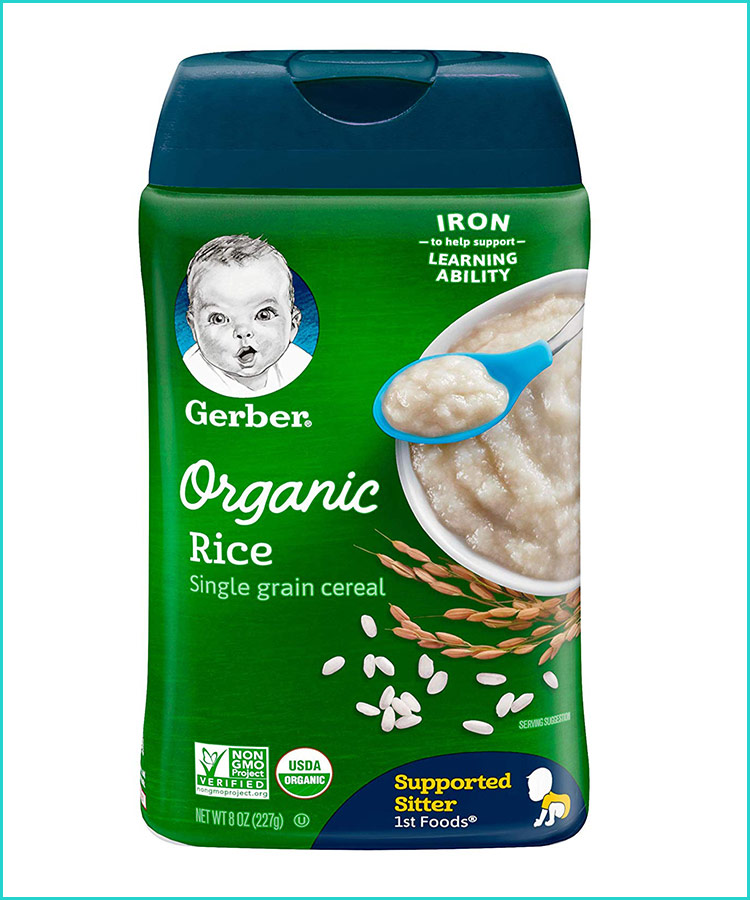
- Cook and finely grind or mash whole-grain kernels of wheat, barley, rice, and other grains.
Learn more about potential choking hazards and how to prevent your child from choking.
Top of Page
how to introduce, with what to start the first feeding of a child, the correct sequence of complementary foods by months
Contents: Hide
- Basic rules for introducing porridge into the baby's menu
- How to prepare porridge for baby foods
How to introduce porridge into complementary foods
According to the recommendations of the Union of Pediatricians of Russia, it is recommended to introduce complementary foods in the range of 4-6 months. At this time, the growing body needs more and more vitamins and minerals every week. But the later introduction of complementary foods can cause a pronounced deficiency of essential micronutrients. In addition, the enzymatic system of the gastrointestinal tract of the baby by this age is already ready to accept new food, and he himself begins to show interest in food.
Expansion of the children's menu helps to provide an actively growing organism with many useful substances, the need for which can no longer be covered by mother's milk or an adapted formula. Also, complementary foods contribute to the formation of taste, mastering the skill of chewing and simply satisfies the curiosity of the crumbs, who are already actively interested in what their parents eat. Almost all experts agree that one of the ideal options for the first adult food for a child is cereal. Various cereals can have a beneficial effect on the baby's digestive system and serve as a valuable additional source of vitamins, minerals and energy necessary for the harmonious development of the baby's organs and body systems.
What kind of porridge is better to introduce for the first feeding
IMPORTANT! Porridge in general is an easily digestible product that is a valuable source of carbohydrates, rich in vitamins and minerals, vegetable protein and fiber. From about 5-6 months of age, when the baby stops eating his usual food (breast milk or formula), complementary foods from cereals help to provide his body with an increased need for nutrients and energy.
From about 5-6 months of age, when the baby stops eating his usual food (breast milk or formula), complementary foods from cereals help to provide his body with an increased need for nutrients and energy.
At the same time, each porridge has its own properties.
Buckwheat. It is with her that they advise to start the very first feeding with cereals. It may be easier for a baby’s body, in which digestive enzymes have not yet formed enough, to absorb it. Buckwheat is rich in protein, magnesium, B vitamins. It has a lot of iron, so this dish is sometimes recommended for anemia. Also, the product has the ability to stimulate the digestive tract.
Rice. Good for premature babies and those who are slowly gaining weight. Groats are rich in dietary fiber and have a pleasant taste that most kids like. There are relatively few vegetable proteins in rice, so it is well absorbed. Porridge from such cereals can help children with unstable stools. However, in the presence of frequent constipation, it is better to introduce buckwheat into complementary foods first.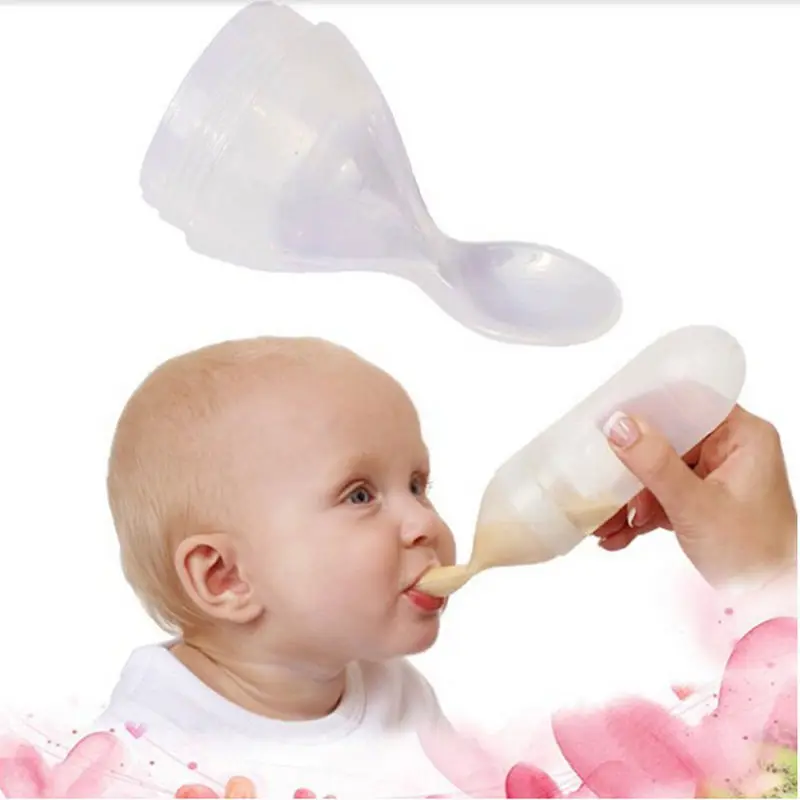
Corn. This cereal has no less value than other cereals. Such a porridge is a real storehouse of vegetable protein, minerals and fiber. Experts believe that it is right to introduce it into complementary foods after the child has become acquainted with buckwheat and rice.
Read also: Corn porridge for complementary foods
When is it better to introduce cereals and in what order
It is recommended to include cereal dishes in the child’s diet 3-4 weeks after he has already become acquainted with the first complementary foods, vegetables, and is completely used to to them. But sometimes porridge can precede them. For example, a pediatrician may prescribe this product if the baby is not gaining enough weight, has problems with stools (with a tendency to liquefy). In any case, it is better to adhere to a certain sequence of introducing cereals into the children's menu, which the pediatrician will tell about.
Video: Where to start complementary foods
Author: pediatrician, Ph. D. Komarovsky E.O.
D. Komarovsky E.O.
6-7 months. Which porridge should be introduced first? To begin with, you can introduce the baby to gluten-free porridge: buckwheat, rice, corn. Gluten is a vegetable protein gluten that can cause children in the first six months of life (and even a little longer) to have difficulty digesting food. This is due to insufficient production in the gastrointestinal tract of the crumbs of the peptidase enzyme, which is necessary for the normal processing of gluten. The consequences of this can be bloating and pain in the tummy, increased gas formation. In very rare cases, celiac disease occurs. This is a hereditary disease, which is expressed in intolerance to gluten throughout life. The first cereals for children must certainly be dairy-free and monocomponent, consisting of one type of cereal. They should not contain any additional components (salt, sugar, honey, fruit, berry, cream fillers).
7-8 months. Add oatmeal to your baby's diet as a new staple. If the child’s body tolerates familiar cereals well, combine different types of cereals with each other. It is still not recommended to cook the dish with cow's milk. At this age, you can try adding toppings, such as applesauce, to the porridge.
If the child’s body tolerates familiar cereals well, combine different types of cereals with each other. It is still not recommended to cook the dish with cow's milk. At this age, you can try adding toppings, such as applesauce, to the porridge.
9-10 months. At this age, you can offer the baby wheat, barley porridge. Cereals can also be used as a side dish, mixed with vegetable, meat complementary foods, and also as one of the components of a light children's soup.
From 12 months. From the year, but not earlier, it is recommended to introduce milk porridges cooked in whole cow's milk. Provided that the crumbs are not allergic to this product. Also at this age, you can already offer your baby to try semolina porridge.
Basic rules for introducing cereals into the baby's menu
1. To make it easier for the child to get used to the new product and the consistency of the dish, prepare a fairly liquid porridge at first. For this, 5 g of cereals are required for 100 g of water.
2. If the product is tolerated normally and the baby likes to eat it, after 7-10 days you can make a thicker concentration - add 10 g of cereal per 100 g of water.
3. The baby should be offered porridge from a spoon. In a number of situations, according to the testimony of a doctor, for example, if the baby is sick or weakened, a bottle with a special nipple is used.
4. The best time to get acquainted with cereals is breakfast. Thanks to this, during the day you can observe the state of health of the baby. It will also be easier to identify an allergic reaction and take the necessary measures immediately. In the morning, the gastrointestinal tract works most actively and enzymes are released that promote the digestion of food and the absorption of substances from it.
5. After feeding with porridge, while its amount has not yet reached the normative serving value, supplement the baby with breast or adapted milk formula.
6. Keep a food diary, recording types of complementary foods, portion sizes, and reactions of the child's body to new foods, if any (colic, indigestion, weight gain, etc.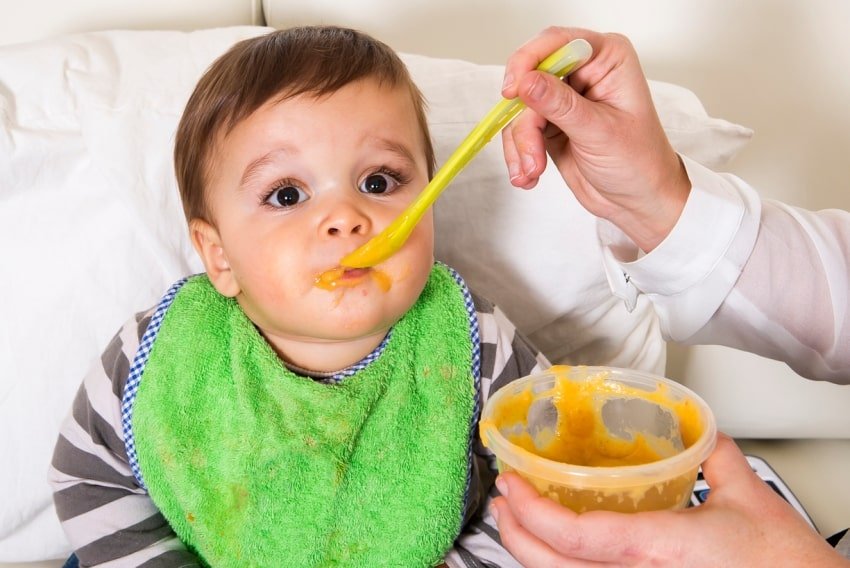 ).
).
7. About 3 weeks should pass between the acquaintance with two new porridges. This will allow the baby to properly adapt to the product, and you can control how the child's body reacts to it.
8. The volume of a single serving of porridge should gradually increase as the baby grows older. Indicative figures are: 160-170 ml at 7-8 months, 170-180 ml at 8-9 months. Starting from 9 months, it is already possible to switch to a complete replacement of one feeding with complementary foods in the amount of 200 ml.
It is clear how to introduce porridge into complementary foods by day is shown in the table:0005
The number of finished porridge
1
5 g (1 teaspoon)
2 9000 9000
10 g (2 teaspoons)
3
15 g (3 teaspoons)
4
20 g (4 teaspoons)
50 g
6
100 g
7
150 g
How to cook cereals for baby foods
Cereal foods can be introduced in the form of home-cooked cereals, instant instant powders, as well as in canned form. Let's consider all the options in more detail.
Let's consider all the options in more detail.
Homemade
To prepare porridge for a child, you can use a special baby food flour made from the appropriate cereal. But such a product is not always found in a regular supermarket. A more affordable option is fresh, good quality cereal. Before cooking, it must be cleaned of possible litter and rinsed thoroughly. The following options are available:
• Method 1. Grind the grains in a coffee grinder to a powder. Throw the product into cold or boiling water and cook until tender over low heat.
• Method 2. Cook porridge from unground cereals. Cool to a temperature of 37 degrees and grind with a blender. In the cooled porridge, you can add a little breast milk or mixture (literally 20-30 ml). This will improve its taste and make it even more nutritious.
Cooked cereals
These are specialized products for baby food that help mothers save time on cooking cereals in the traditional way, but at the same time take care of a high-quality, nutritious and varied baby's diet.
IMPORTANT! The Bebi Premium line includes the entire range of cereals recommended for the first feeding. These are dairy-free and milk porridges, monocomponent and multi-cereal, with fruit, berry, vegetable, creamy components. They are:
• made from certified raw materials;
• have a balanced composition;
• additionally enriched with prebiotics.
Freshly boiled water is used to make porridge. The optimal proportions of liquid and powder for the appropriate age of the child are usually indicated on the product box.
Porridges in jars
When the baby is already well acquainted with porridge and other types of complementary foods, you can give him canned foods in jars as a second food. Such products contain cereals with fruit or vegetable puree, with the addition of milk. Contains no salt and sugar. This is a convenient way to provide the baby with the necessary nutrition during trips and travels.
Important Rules
The main thing that all specialists from the Russian Research Institute of Nutrition of the Russian Academy of Medical Sciences and the World Health Organization (WHO) agree on is that complementary foods should not be forced! If you see: the child categorically does not eat what is offered, leave this idea for at least a week. This is a sure indicator that it is for your baby that the time for complementary foods has not yet come. What do we have to do? Form the first food interest. How? Sit on your knees when you eat yourself, show food, dishes. Children learn quickly and adopt your habits and your eating behavior. Listen to your baby!
This is a sure indicator that it is for your baby that the time for complementary foods has not yet come. What do we have to do? Form the first food interest. How? Sit on your knees when you eat yourself, show food, dishes. Children learn quickly and adopt your habits and your eating behavior. Listen to your baby!
#First food #Complementary food
Which porridge to choose for the first food | How to introduce porridge: how to cook, properly breed porridge for the first feeding
Your baby is growing up, getting stronger, gaining weight, and now there comes a moment when feeding only breast milk or formula is not enough for the full development of the crumbs. It's time to introduce complementary foods into your baby's diet. The question arises - where to start? Your pediatrician should answer it.
Today we’ll talk about how to properly introduce complementary foods with cereals. Let's talk about how to breed porridge, which one is better to choose for the first feeding, and how homemade porridge differs from store-bought.
Cereals for children up to a year
Porridge contains all the necessary set of trace elements, is perfectly absorbed, and has a beneficial effect on the digestive system.
Usually, cereals begin to be introduced into the diet of a baby at the age of six months. If the child is bottle-fed, it is permissible to start earlier, at 4-5 months. These are only approximate dates, in fact, everything is individual. It is necessary to take into account the pace of development of the child, his readiness for adult food and the tendency to allergic reactions.
Complementary foods with cereals are recommended for children who are not gaining weight well. Most likely, the baby simply does not have enough calories. In any case, before starting complementary foods, a pediatrician should be consulted. He will help you choose porridge, tell you in what quantities and how often to feed her child.
It is important that the first porridge be:
- Industrial production .
 Not only because the raw materials are sterilized and undergo rigorous quality control. But also because at home it is difficult to achieve such a degree of grinding cereals, as cereal manufacturers do. For example, Materna porridges consist of delicate cereal flakes, which form an absolutely homogeneous mass when brewed. If desired, they can be diluted to a thick mixture and offered to the baby to drink from a bottle.
Not only because the raw materials are sterilized and undergo rigorous quality control. But also because at home it is difficult to achieve such a degree of grinding cereals, as cereal manufacturers do. For example, Materna porridges consist of delicate cereal flakes, which form an absolutely homogeneous mass when brewed. If desired, they can be diluted to a thick mixture and offered to the baby to drink from a bottle. - Single component . To track down the cause of an allergic reaction if it occurs.
Dairy or non-dairy: with which cereals do you start your first complementary foods
Pediatricians recommend starting complementary foods with dairy-free gluten-free cereals. Gluten is a fairly heavy vegetable protein for digestion by a child's body. Its use can lead to allergies. Dairy-free cereals can be diluted with breast milk or your own milk formula to make them more nutritious and taste more familiar to the baby.
The first gluten-free cereals include: corn, rice and buckwheat.
How to switch from dairy-free to milk porridge
If no allergic reactions occur within 4-7 weeks from the start of complementary foods and dairy-free cereals are well absorbed, you can start offering milk cereals for children up to a year old to the baby, their energy value is much higher.
How to properly organize complementary foods with cereals
For the first acquaintance, you need to cook a five percent porridge, which means that for five grams of dry porridge there should be 100 mg of water. The resulting consistency will be ideal for a child who is not yet able to chew and swallow thick food.
The best time to feed is the morning meal. So you will have time to track the baby's reaction to a new product: if there are any allergies or stool disorders.
For feeding, a baby spoon made of safe material for the baby's delicate gums or a regular teaspoon is used.
As a first test, it is enough to give the child about half a tablespoon of liquid porridge.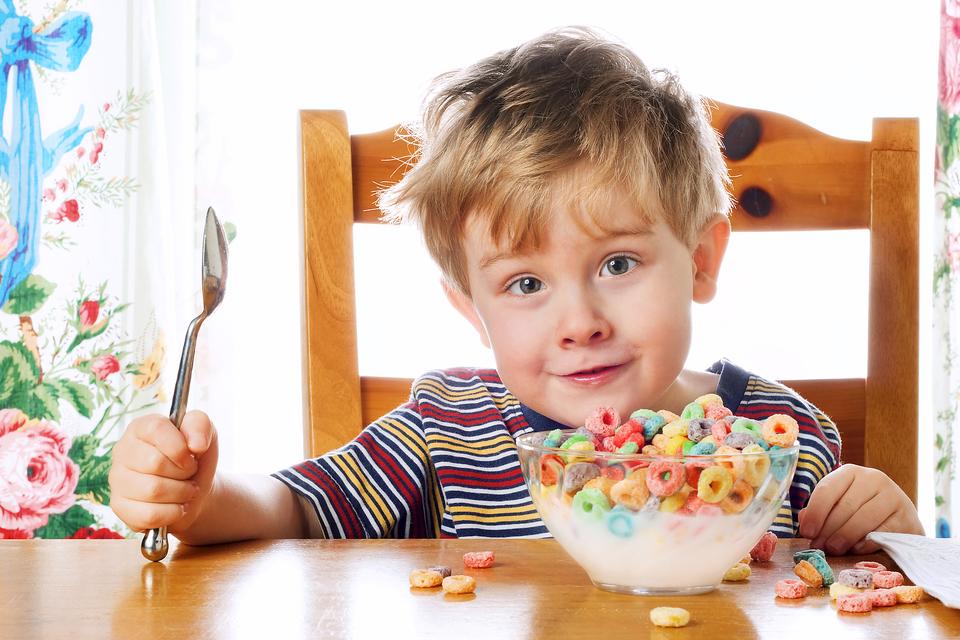 The kid should try out a new product, get used to the change in texture and taste.
The kid should try out a new product, get used to the change in texture and taste.
Make sure the porridge is not too cold or hot, and does not contain lumps.
After porridge feeding, feed your baby his usual food - breast milk or formula.
Increase the volume of a serving of porridge only when you are sure that the baby eats it with pleasure, and he does not experience unwanted reactions.
Every day, increase the amount of porridge per spoon until the serving is 150 g for a six-month-old baby, 160-170 g for a child aged 7-8 months and 170-180 g for an age of 8-9months. Closer to the year, the serving volume will be about 200 g. And the five percent porridge is replaced by a thicker, ten percent one.
We remind you that these are only general recommendations, and the development of each child is individual and the dosage may differ from that described above. It is important not to change cereals at the beginning of complementary foods, your baby should get used to one cereal, and only after a successful debut, you can offer the next one - not earlier than in two weeks.
If you start experimenting ahead of time and give your child a different porridge every day, in case of an allergy, it will be very difficult for you to understand what exactly the child's body reacted to.
The child does not eat porridge
Toddlers refuse porridge for various reasons.
- Don't like the taste or texture.
It happens that children who started complementary foods with fruits and vegetables do not eat porridge, because their taste is very different and not so bright. Try adding an already familiar apple or broccoli to a new porridge. In addition, a child may not like the taste of some cereal today, but in a couple of weeks he will eat it with pleasure. Set this mess aside for a while and try again later. - The porridge is too hot or too cold.
Check food temperature on the inside of your wrist. If you do not feel cold or hot, then the temperature is optimal. - The child is not yet hungry.
 Set the plate aside for half an hour and then try again.
Set the plate aside for half an hour and then try again.
The main advice to parents is not to despair, and offer the same porridge many times in different combinations.
What kind of porridge to introduce into complementary foods first
Be sure to ask your pediatrician for advice on which cereal to give your baby first. After all, all kids are different.
The main types of cereals recommended for consistent introduction into the child's diet:
- Buckwheat porridge . It is considered indispensable in the diet of the child. Contains vitamins B1 and B2, iron, magnesium, protein.
- Rice porridge . Contrary to the common misconception of many parents, baby rice porridge will not cause constipation because it does not contain crushed rice. For the manufacture of these cereals, rice flour is used, which has a beneficial effect on the digestion of the child and is rich in healthy dietary fiber.
- Corn porridge .

.




